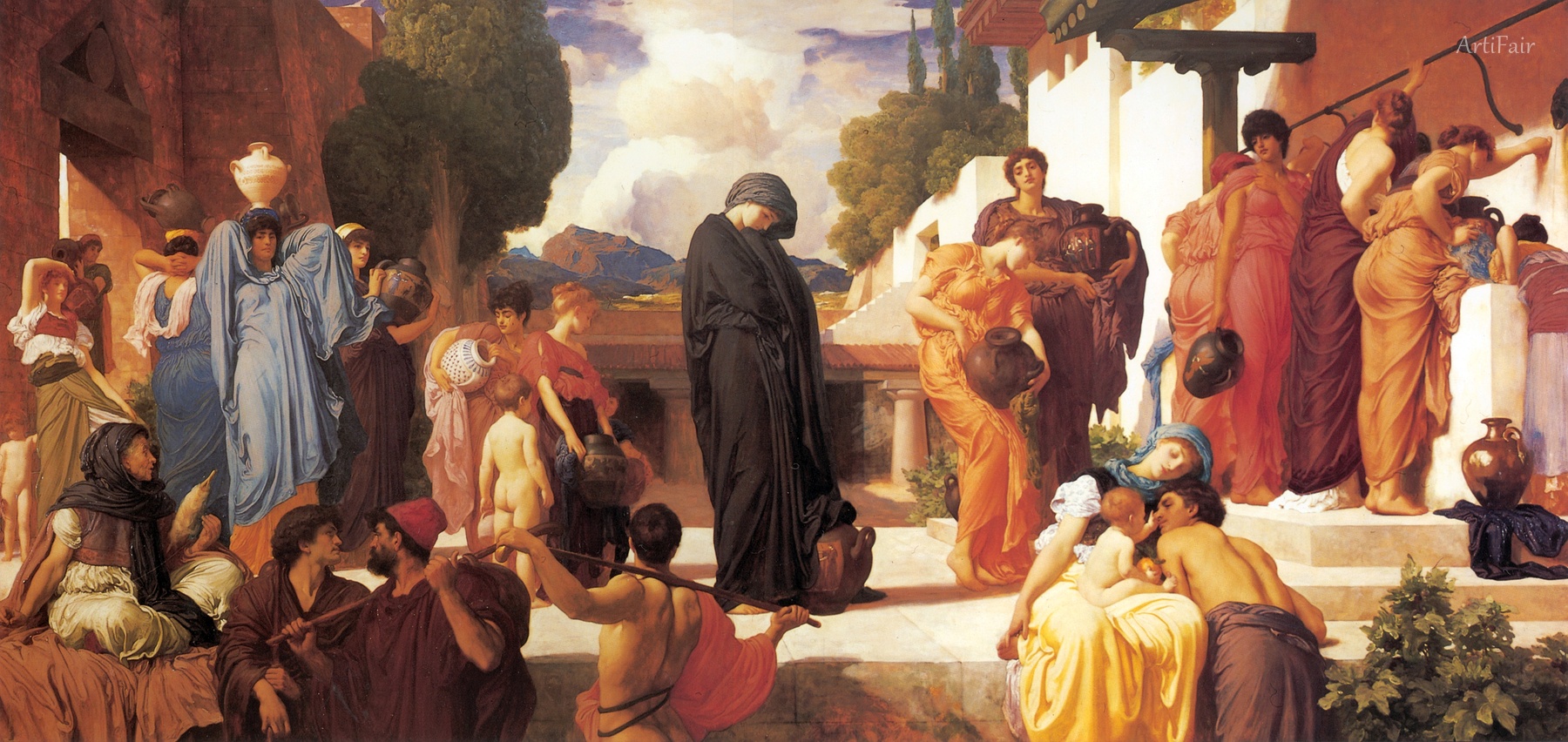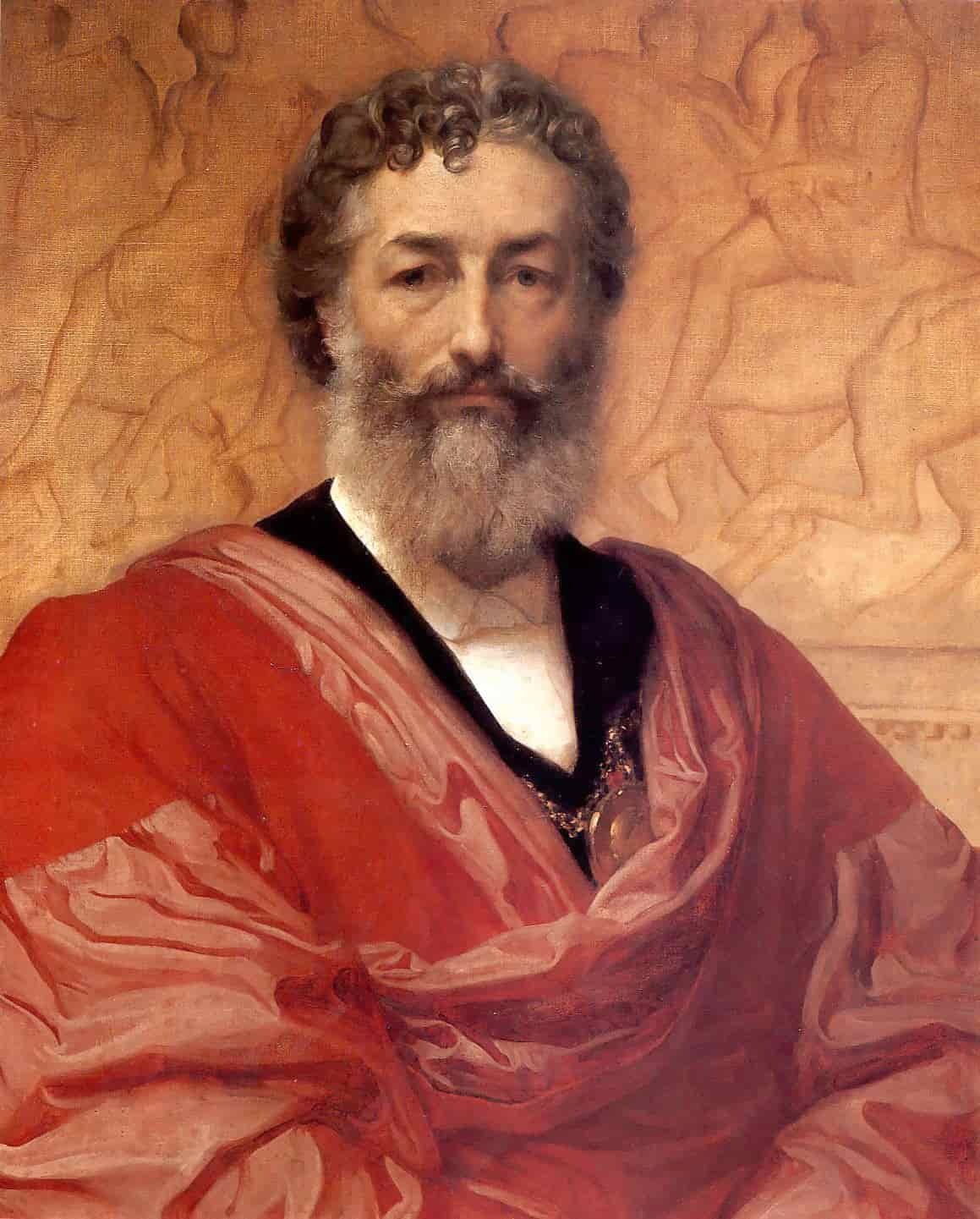

Frederic Leighton
GB
18
Artworks
1830 - 1896
Lifespan
Artist Biography
Frederic Leighton, 1st Baron Leighton (1830-1896), was a towering figure in Victorian art, renowned for his masterful paintings and sculptures that epitomized the classical and aesthetic ideals of his era. Born in Scarborough, Yorkshire, to a prosperous medical family, Leighton's upbringing was cosmopolitan. His family's extensive travels across Europe, undertaken partly for his mother's health, exposed him to diverse cultures and artistic traditions from a young age. He became fluent in French, German, Italian, and Spanish. His formal artistic education began in Florence and continued in Frankfurt under the Nazarene painter Edward von Steinle, who profoundly influenced his meticulous approach and idealistic themes. Further studies in Berlin, Munich, and Paris broadened his horizons, though his parents stipulated he should only pursue art if he could achieve eminence.
Leighton's breakthrough came in 1855 with "Cimabue's Celebrated Madonna is Carried in Procession through the Streets of Florence." Exhibited at the Royal Academy in London, this grand historical painting was famously purchased by Queen Victoria on its opening day, catapulting the young artist to fame. Despite this initial success, his continental training initially made him somewhat of an outsider in the British art scene. He settled permanently in London in 1859, gradually ingratiating himself with the art establishment. His early works often showcased historical and biblical narratives, characterized by precise draughtsmanship, rich colour, and a grand sense of composition, elements that would remain hallmarks of his style.
Throughout the 1860s, Leighton's style evolved, increasingly embracing the tenets of Aestheticism, which prioritized beauty and artistic sensibility over narrative or moralistic concerns. He became a leading figure in the Holland Park Circle, alongside artists like G.F. Watts. His subjects frequently drew from Greek mythology and classical antiquity, as seen in iconic works like "Flaming June" and "The Garden of the Hesperides." These paintings are celebrated for their sensuous depiction of the human form, luminous colours, and meticulously rendered drapery. Leighton also excelled in portraiture and landscape, though his mythological scenes remained his most famous contributions. His travels to Egypt, the Middle East, and Greece further enriched his visual vocabulary, infusing his work with exotic details and atmospheric effects.
Beyond painting, Leighton made a significant impact as a sculptor. His 1877 bronze, "An Athlete Wrestling with a Python," is considered a seminal work of the New Sculpture movement, which sought to revitalize British sculpture with a new dynamism and naturalism. This piece showcased his profound understanding of anatomy and movement. Leighton's dedication to the arts extended to his public life. He was elected an Associate of the Royal Academy in 1864, a full Academician in 1868, and became its esteemed President in 1878, a position he held until his death. Knighted in the same year, he was a highly respected figure, known for his eloquence, administrative skill, and efforts to elevate the status of art in Britain.
Leighton's personal life remained largely enigmatic. He never married and was intensely private, leading to speculation about his personal relationships, particularly concerning his model Dorothy Dene. He built a magnificent house and studio in Holland Park, Leighton House (now a museum), which became a testament to his aesthetic ideals and a hub for artistic society. His later works often explored themes of mortality, reflecting a depth influenced by masters like Michelangelo. In recognition of his immense contributions, he was made a baronet in 1886 and, just a day before his death from angina in January 1896, was created Baron Leighton of Stretton—the first British painter to receive a peerage, albeit the shortest-lived in history. His last words, "My love to the Academy," underscored his lifelong devotion to the institution he led.
Frederic Leighton's legacy is multifaceted. While his academic style fell out of favour with the rise of modernism, there has been a significant reappraisal of his work in recent decades. He is now celebrated for his technical virtuosity, his pivotal role in the Aesthetic Movement, his revival of classical themes, and his contribution to British sculpture. His depictions of the male and female form, often imbued with a subtle eroticism, continue to captivate audiences. Leighton remains a symbol of the zenith of Victorian academic art, an artist whose pursuit of beauty left an indelible mark on the cultural landscape of his time.